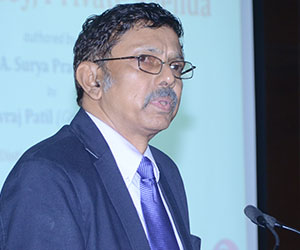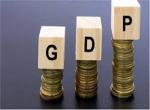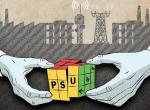Mr.Narendra Modi is perceived as a tough Prime Minister who will take tough decisions. He is also seen as one who will even take harsh decisions if need be. In the run up to his government’s first budget, Mr Modi reinforced this image
by warning the people that he may have to administer some “bitter medicine” in order to revive the economy. Since no Prime Minister in recent times had ever given the people such advance warning, the people expected some really harsh measures in the Union Budget, but that did not happen.
The only “bitter pill’ was the increase in railway fares by 14 per cent but the government gave the tax payers some sops in the general budget, which more than made up for the railway fare hike. In the Union Budget. the government announced measures to revive the manufacturing sector, stepped up investments in infrastructure, declared its intent to woo back the foreign investor and empower youth with skills and jobs. The Railway Budget too was a pragmatic one with particular emphasis on improving the financial condition of the Railways, completion of on-going projects and improvement in railway safety, cleanliness and speed.
All this is in line with the promises made by Mr.Modi and the Bharatiya Janata Party (BJP) during the Lok Sabha election campaign, but it was done without flamboyance or dramatics. The two budgets were drawn up with a great deal of responsibility to ensure continuity where needed and to effect change where essential. That is why many observers say that there is no ‘big bang” proposal in this budget. But what they forget is that the budget signifies the near absence of populism and some extra dose of pragmatism. Also, the past practice of fudging figures and using the Union Budget as a vote-catching measure is clearly absent in this budget. Clearly, this was something expected of the Modi government. That is why, overall, the Prime Minister and his team deserve to be complimented for taking stock of India’s financials, accepting the terrible economic situation which they have inherited more as a challenge than a curse and using Budget 2014 to prepare the ground for the government’s vision for overall economic growth.
The Subsidy Basket
In recent years, a major concern of some economists has been the ballooning subsidy bill of the Union Government. In their view, if the government lacks the political will to cut subsidies, it will not be able to pull the country’s economy out of the morass that it is in today. The total subsidy bill runs to over Rs 2.6 lakhs crores and this includes the food subsidy (1.15 lakh crore), Fertiliser subsidy (72,000 crores), Petroleum subsidy (Rs 63427 crores) and Kerosene subsidy (Rs 29488 crores). In fact, the government has provided around Rs 20,000 crores more towards food subsidy in this budget. The Finance Minister has wisely appointed an Expenditure Management Commission and put off a decision on subsidies until the committee’s findings are known. Although the government has not tinkered with the subsidy budget, it has taken the initiative to examine subsidies de novo by appointing an Expenditure Management Committee. This is possibly the best example of non-flamboyance in this budget.
This budget is different from those of the past on many counts. For example, the government has announced its firm resolve to ensure a stable, predictable tax regime – something that is critical for investors, both domestic and foreign. Next, it has announced several measures to boost the manufacturing sector, which had gone into a slump over the last two years; to improve the job market and to enhance the skills of the working class; to give a big push to the infrastructure and Real Estate sectors; and to woo back foreign investors, who were losing interest in India in recent years.
The first big step announced by the Finance Minister to reassure the foreign investor was the promise that the government would normally avoid retrospective taxation and that should issues arise, such matters would be referred to a committee appointed specifically to handle such cases. Other decisions announced by Mr.Jaitley to woo back investors include raising the limit for Foreign Direct Investment (FDI) in Defence and Insurance Sector from 26 per cent to 49 per cent. In order to revive the manufacturing sector, the Finance Minister announced a venture capital fund with a corpus of Rs 10,000 crores to attract private capital towards micro, small and medium enterprises, promotion of mega industrial zones and to promote manufacturing hubs for electronic goods. On the infrastructure front, the Finance Minister has allocated Rs 37880 crores for roadways, announced major expansion of the gas distribution grid and allocated significant sums for developing waterways along the Ganga, metro rail projects and airports for tier I and tier II cities. Mr.Jaitley has also sought to inject fresh impetus into the Real estate sector with huge allocations (Rs 7060 crores) for Smart Cities – satellite towns near big cities -to be built for the aspiring classes.
This budget more than trebles the target for construction of highways (23 kms per day as against 8 kms in 2012-13). Mr.Jaitley has laid out the blue print for building 100 new cities and prioritises development of 100 most backward districts. It also smoothens the process for creation of special economic zones. The budget also offers tax incentives to Infrastructure Investment Trusts and Real Estate Investment Trusts in order to step up investments in these sectors.
As regards the average citizen, the budget left greater disposal income in the hands of ordinary tax payers so that they could increase their savings and also have surplus funds to spend. Side by side, the Finance Minister announced tax cuts for a number of consumer goods.
The `Modi Effect’ in the Union Budget
One can also discern a distinct “Modi Effect” in this budget. A major promise made by the Prime Minister to the people during the campaign was that he would like to work towards ensuring 24X7 electricity to every home in the country. Mr.Modi appears to have begun work on this ambitious scheme in right earnest with his government’s first budget allocating funds for the Deendayal Upadhyaya Gram Jyoti Yojana . The Prime Minister has often spoken of the need to impact skills to the youth, so that the degrees and certificates that they carry guarantee the acquisition of skills which employers want. The budget has provided for creation of a National Multi-Skill Mission to impact skills to youth in the employment market. “Swach Bharat” ( Clean india) has been another pet project of Mr.Modi and the budget has taken due notice of this by allocating funds for the `Swach Bharat Abhiyan’ with 2019 as the target for ensuring toilet facilities in every household.
When Mr.Modi visited Varanasi during the campaign he told the people that he had come to the holy city because he had been called by ‘Maa Ganga’. Mr.Modi has displayed his reverence for India’s most revered river and city by allocating over Rs 2000 crore in the budget for a project titled “Namami Ganga”, meant to clean up the holy river. The budget also allocates over Rs 4200 crores for creating a Ganga Waterway and another Rs 100 crores for repairing and renovating the ghats at Varanasi, Haridwar and other pilgrim centres along the Ganga.
During the campaign Mr.Modi laid special emphasis on the Himalayan region and the North-Eastern states and his special concern for this region is more than visible in his government’s first budget. The budget allocates an extra Rs 1000 crores for railway projects in the North-East apart from funds for a Sports University in Manipur, Rs 100 crores for a National Centre for Himalayan Studies, a separate 24X7 television channel for the region and special measures to promote organic farming in the region. The budget has something substantial for the state of Jammu and Kashmir as well with Rs 200 crores for sports stadia and Rs 100 crores to train sports personnel from the Himalayan region. The plight of Kashmiri migrants from the valley has been a matter of concern for the Prime Minister and that is why in his government’s very first budget Mr.Modi has ensured allocation of Rs 500 crores for this community. Some other sectors and programmes which are close to the Prime Minister and which have found mention in the budget are solar power and wind energy, metro rail projects, smart cities and heavy investment in the infrastructure sector.
First Budget by a Single Party Majority Government in 30 Years
The political significance of this budget is that it is the first Union Budget presented by a single-party majority government in 30 years. The last time this happened was in 1984, when the Congress led by Rajiv Gandhi won a massive majority in the Lok Sabha. Thereafter, all governments until May, 2014 were coalition governments or minority single-party governments supported from the outside by some political parties. This is an important political aspect that needs to be factored in while discussing the budget formulations of governments because if a single party does not command a majority in the Lok Sabha, the dominant party in the government has to cope with pulls and pressures from many coalition partners while drafting its fiscal policy for the year. Such constraints rob the budget of a clear focus and make it a bag of compromises. This is what makes the first budget of the Narendra Modi government quite distinct from the budgets prepared over the last three decades. Therefore, the BJP government led by Mr.Modi has the fullest freedom to choose its course of action, without any restriction whatever from any quarter. Such freedom of action also comes with a caveat, namely that such a government does not have the luxury of blaming others or proffering excuses for decisions taken or not taken. Given the overall direction of the Union Budget, it must be said that the Modi government has made the best of the clear mandate given by the electorate and taken certain decisions which would coalition governments would have hesitated to take. For example, the decision to establish an Expenditure Management Commission to review the subsidy regime that consumes over Rs 2.6 lakh crores per annum could never be taken by a government which stands on crutches provided by the Congress Party, the Samajwadi Party, the Janata Dal (United) or such other parties which are trying to perfect the art of providing doles to people in exchange for votes. Though the Modi government has not scrapped or slashed subsidies, it has definitely signaled its intention to take a fresh look the subsidy basket. This has been possible only because the BJP enjoys a clear mandate and the Prime Minister remains committed to his promise to provide good governance.
Similarly, the decision to provide over Rs 2000 crores to clean the Ganga as also funds to repair the ghats in Varanasi, Haridwar and other pilgrim centres along the banks of this holy river, would never have been possible if the government depended on pseudo-secular political entities like the Congress or the Samajwadi Party for its survival. Over a period of time, these parties have begun to display contempt for the emotions and concerns of the majority in the country and this is the reason why they have allowed the Ganga, which is regarded as the soul of Bharat by one billion Hindus, to deteriorate. Likewise, the decision to increase the FDI in the Insurance and Defence sectors could never be taken by a government dependent on the communist parties for its survival.
Mr.Modi is happily free of all such political encumbrances and that is why he is able to focus on priorities in order to revive the Indian economy and put the country on a high growth path all over again
Published Date: 17th July 2014, Image source: http://economictimes.indiatimes.com









Post new comment